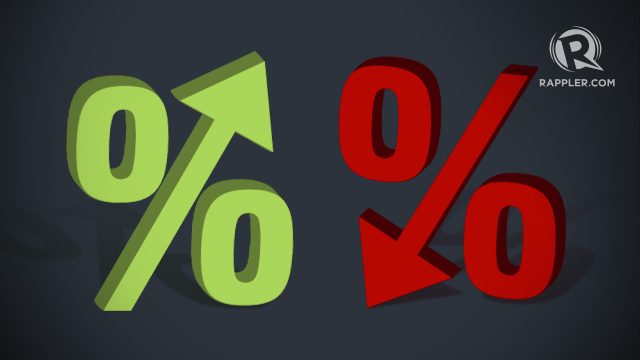SUMMARY
This is AI generated summarization, which may have errors. For context, always refer to the full article.

On October 23, the Monetary Board has maintained the Bangko Sentral ng Pilipinas (BSP) key policy rates at 4% for overnight borrowing and 6% for overnight lending.
In September though, BSP hiked the interest rates by 25 basis points (bps), bringing the overnight borrowing and lending to 4% and 6% respectively.
So what does this mean for us? Is this good news or bad news for us as consumers and depositors?
It depends.
Interest rate is a tool used by the central banks to balance economic activity. On one end, you have the danger of inflation, or the rise in prices of the goods and services. On the other end of the spectrum, you have the danger of economic slowdown if interest rates remain high.
There are pros and cons in either of the situation; and it’s the job of the BSP to well, make everyone happy.
Low interest environment
In a low interest environment, financing costs are lower.
Merchants take advantage of this situation by encouraging consumers to finance their purchases. That is why there has been a proliferation of installment plans on practically just about anything – facial care, gym memberships, gadgets, travels, name it, and they probably have that on 12-month-0%-interest installment plans. Properties and automobiles also became more affordable to the general public. Longer terms and lower monthly amortizations attracted tons of buyers.
Why wouldn’t it be enticing? This scheme makes everything affordable to us. From an economic point of view, it makes more sense to buy things now because the inflation rate is higher than the interest rate we’re getting from the bank so might as well spend it before things get more expensive.
Business activities are more robust because the cost of expansion is also cheaper. Businesses go to an expansion mode whenever interest rates are low. Malls and fast food branches become ubiquitous. More branches mean more revenues for the companies. This in turn reflects in the share prices of these publicly-listed companies.
Thus, our stock market has been in an uptrend since 2008 (naturally, with corrections along the way). It is worth mentioning that people made a lot of money from this bull-run. Ironically though, as bank depositors, we have since been complaining over the meager interest rates we are receiving.
Although things look rosy when interest rates are low, the primary danger is an economic bubble where large amount of money find itself in real estate and stock market. Once this bubble explodes, as it certainly will, recession often follows. That won’t spell any good for us.
High interest environment
Naturally, what is down will go up eventually. We have been living in a low interest environment, and have had rate cuts for the past couple of years that we have forgotten that what is low will go up.
A rate hike of 25 bps or 0.25% is negligible. In fact, this is welcomed! The reason central banks, in this case our BSP, raise interest is to fight off inflationary pressure. When interest rates are high, consumers might rethink their purchases and park that in banks instead. Financing becomes more expensive.
Makes sense right? High interest rate is an incentive to save. As a consumer, I’m getting more interest income now than I was years before (interest rate hit an all-time high of 56% in December 1990).
The downside, however, is that since people are holding on to their case in a high interest environment, there is less disposable income to go around. This means less sales for companies, thus, less profit and less room for expansion. All these reflect on the share prices of publicly-listed companies. Lower profit (or even loss), means lower share prices. Woe to the investors who bought at the peak!
Those with outstanding loans might default in their obligations in case payments become too high for them. The bubble pops when large scale default happens and once it does, it spells losses for the financial institutions; and all of this leads to a lesser bottom line or even bankruptcy (case in point is the mortgage crisis of the United States in 2008).
As such, interest rates is a double-edged sword.
While we do not notice it, it affects the way we spend, save, and invest. Whether it is high or low, our objective is to make money regardless where it is in present time. That is wise financial planning. – Rappler.com
 Kendrick Chua is a registered financial planner of RFP Philippines. He writes regularly about personal finance. He is also a Chinese language instructor, TV host, free runner, and violinist. To learn more about RFP, you may email info@rfp.ph.
Kendrick Chua is a registered financial planner of RFP Philippines. He writes regularly about personal finance. He is also a Chinese language instructor, TV host, free runner, and violinist. To learn more about RFP, you may email info@rfp.ph.
Add a comment
How does this make you feel?
There are no comments yet. Add your comment to start the conversation.